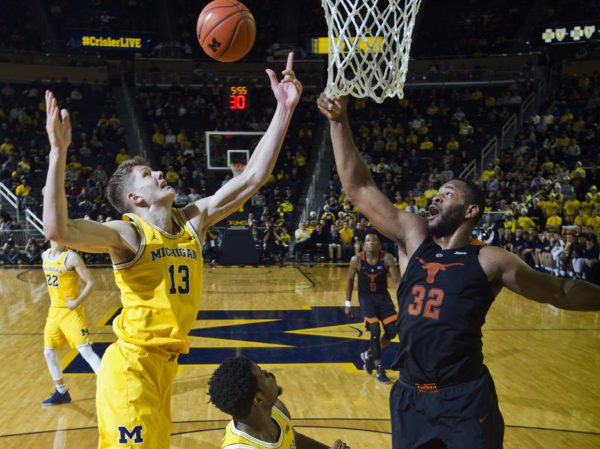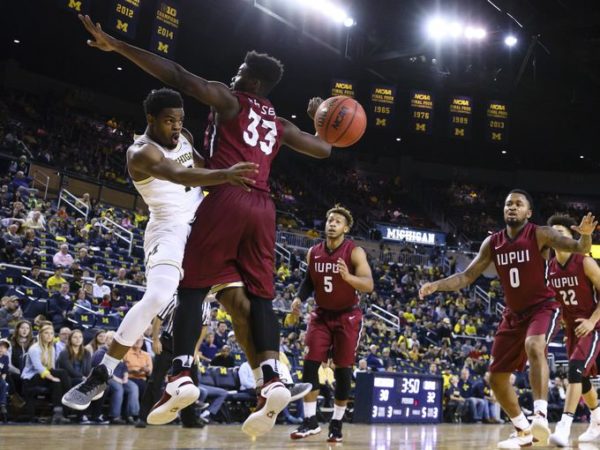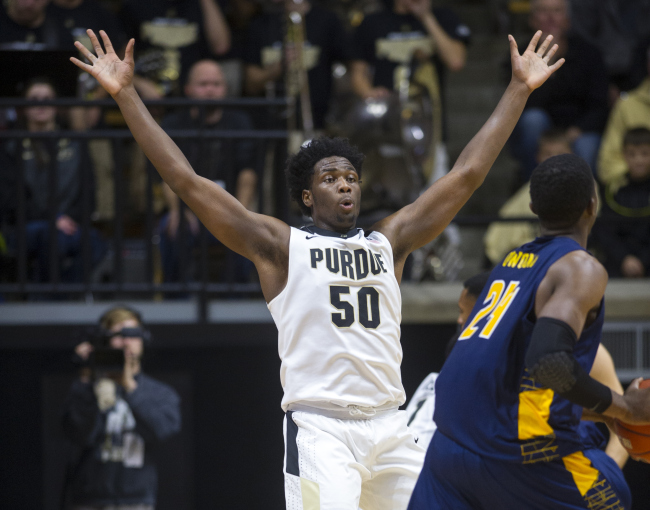Emerging Frontcourt Providing Michigan With New Ways to Win
Posted by Tommy Lemoine on December 8th, 2016Michigan’s 53-50 victory over Texas on Tuesday night was anything but vintage John Beilein basketball. The Wolverines—usually an offensive-leaning unit heavily led by guard play—scored 0.87 points per possession against the Longhorns, with its veteran starting backcourt combining for just 13 points on 4-of-19 shooting. Instead, Beilein’s group relied upon two facets of the game seldom mentioned in the same breath as Michigan basketball: stingy team defense and major offensive production from its big men—namely, sophomores Mortiz Wagner and D.J. Wilson. For a team short on depth and struggling to find a consistent scorer, the newfound production in the paint was a welcome surprise. To understand just how uncharacteristic the victory was, consider this: Michigan had not won a game in which it scored fewer than 0.90 points per possession since February 23, 2008—Beilein’s first year on the job. Much like that contest—a 49-43 win over Illinois—Tuesday’s affair came down to which team could eke out enough late buckets without compromising its defensive intensity. For the Wolverines, both the late buckets and the intensity were supplied by Wagner.

Forward Moritz Wagner was instrumental in Michigan’s win over Texas (AP Photo/Tony Ding)
“I thought [Wagner] was the best player on the floor tonight,” Texas head coach Shaka Smart said afterwards. “He can shoot, he’s 6’11”, he can put the ball on the floor… Tonight he was constantly in attack mode.” Not only did the German import lead Michigan with 15 points on 7-of-13 shooting, he came up with both the go-ahead putback and the game-winning block in the game’s closing seconds, his emotions pouring out as the clock hit zeroes. The sequence was a testament to both his rare offensive skill set and his improving defensive discipline. “Mo’s blocking shots really for the first time in his life,” Beilein said of Wagner. “He’s learning to be a bigger presence at the rim. I think he’s making major steps defensively right now.” Read the rest of this entry »












































